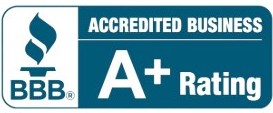
Internal Search Engine Optimization
Mastering Internal SEO: A Guide to Optimize Your Website for Industry Keywords In the ever-evolving digital landscape, securing a prominent position on search engine results pages is a game-changer for businesses. Internal Search Engine Optimization (SEO) plays a crucial role in making your website not only visible but also strategically aligned with the keywords that [...]
Mastering Internal SEO: A Guide to Optimize Your Website for Industry Keywords
In the ever-evolving digital landscape, securing a prominent position on search engine results pages is a game-changer for businesses. Internal Search Engine Optimization (SEO) plays a crucial role in making your website not only visible but also strategically aligned with the keywords that define your industry. In this guide, we will delve into the essential steps to optimize your website for the keywords that matter most to your business.
Understanding Internal SEO: The Foundation of Online Visibility
Internal SEO focuses on optimizing elements within your website to enhance its visibility in search engine rankings. By aligning your content with industry-specific keywords, you can attract a targeted audience actively searching for products or services you offer.
1. Conduct Thorough Keyword Research
Before diving into optimization, it’s essential to identify the keywords that resonate with your industry and are frequently searched by your target audience. Utilize keyword research tools to uncover relevant terms, ensuring a solid foundation for your internal SEO strategy.
2. Optimize Page Titles with Targeted Keywords
Page titles are the first thing users see on search engine results pages. Craft compelling titles that not only accurately represent your content but also incorporate your chosen industry keywords. This optimization ensures that your pages stand out to both search engines and potential visitors.
3. Harness the Power of Heading Tags (H1, H2, H3)
Structuring your content with proper heading tags not only enhances readability but also signals the importance of specific sections to search engines. Include your target keywords in heading tags to reinforce the relevance of your content.
4. Craft Engaging Meta Descriptions
Meta descriptions serve as concise previews of your page content. While they don’t directly impact rankings, well-crafted meta descriptions can significantly improve click-through rates. Incorporate industry keywords naturally to entice users to click on your link.
5. Optimize Image Alt Tags
Visual content is a vital part of websites, and optimizing image alt tags enhances both accessibility and SEO. Use descriptive alt tags that include relevant keywords to provide context to search engines about the content of your images.
6. Leverage Schema Markup for Enhanced Rich Snippets
Implementing schema markup is a strategic move that provides additional context to search engines. It enhances the appearance of your snippets on search engine results pages, potentially leading to higher click-through rates.
7. Strategic Keyword Placement in Content
Craft compelling, informative content that seamlessly incorporates your target keywords. Avoid keyword stuffing and focus on providing value to your audience. Strategic placement of keywords in headings, subheadings, and throughout your content reinforces the relevance of your pages.
Elevating Your Website’s Presence with Internal SEO
Mastering internal SEO is a dynamic process that involves continuous refinement and adaptation. By aligning your website with industry keywords, you not only improve visibility but also create a user-friendly environment that resonates with your audience. Stay proactive in monitoring keyword trends, adapting your strategy, and witnessing the lasting impact of a well-optimized website on your online presence.
Share this article
Written by : Rafael
Follow us
A quick overview of the topics covered in this article.
Latest articles
July 16, 2025
July 16, 2025
July 16, 2025





